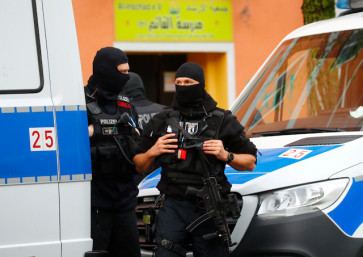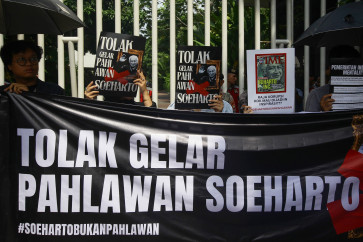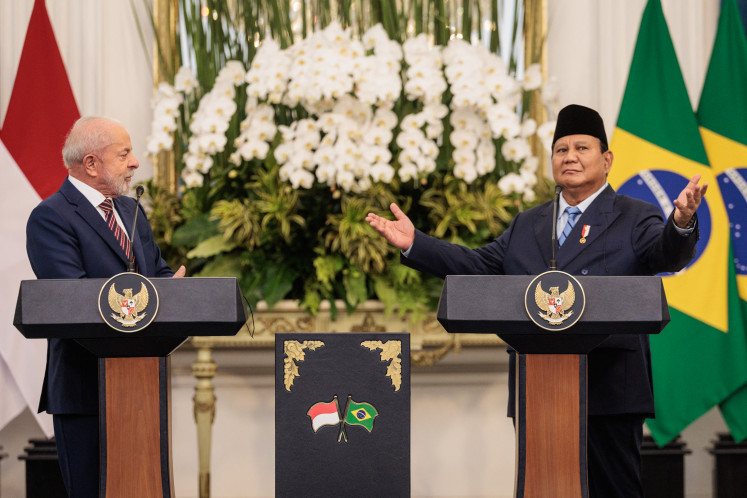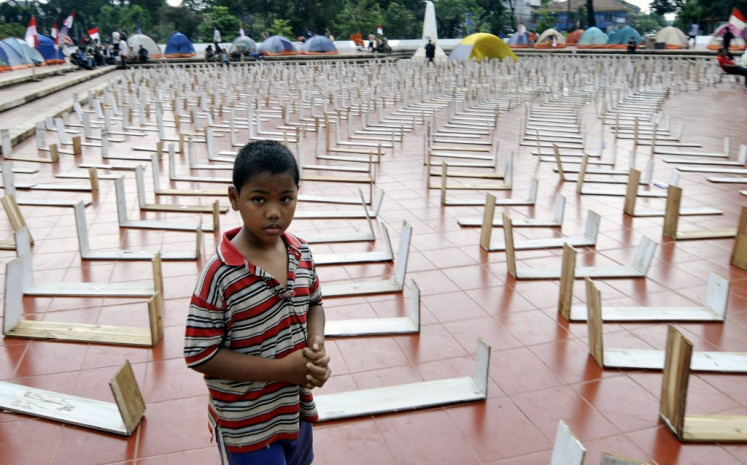Popular Reads
Top Results
Can't find what you're looking for?
View all search resultsPopular Reads
Top Results
Can't find what you're looking for?
View all search resultsShades of blue
Fresh flavors: The modified bulu hayam (chicken feathers) pattern in Garut batik has been made smaller than the original style to suit customers’ tastes
Change text size
Gift Premium Articles
to Anyone
F
span class="caption" style="width: 298px;">Fresh flavors: The modified bulu hayam (chicken feathers) pattern in Garut batik has been made smaller than the original style to suit customers’ tastes. (JP/Dian Kuswandini)
One drop of indigo stains the whole pot of milk, an old proverb says. In the case of batik, one drop of indigo creates a beautiful piece of wearable art.
Ever heard of indigo batik? It’s among the latest trends in batik. With its attractive shades of blue, indigo batik deserves appreciation for its beauty — and for its environmentally friendly manufacturing process.
Now part of the organic or “eco-batik” movement, indigo batik uses the plant Indigofera tinctoria — common name true indigo — as a natural dye. The result: No more hazardous synthetic dyes that pollute our soil and water; what’s more, and even better, this natural dye acts as a natural insect repellant and any waste can be used as natural fertilizer.
“We’ve heard many times the proverb that a drop of indigo stains the whole pot of milk, right?” says Mayasari Sekarlaranti, or Nita, of Galeri Batik Jawa, which produces indigo batik.
“That proverb is very true because these Indigofera leaves create very strong blue tints that can be used for textiles. This surprises many of our customers. They say: How can a green-colored plant like Indigofera create blue tints?” she laughs.
But the process of using these humble green leaves to make blue dye is an age-old tradition.
The leaves are soaked in water and fermented in order to convert indican, the glycoside naturally present in the plant, to the blue dye indigotin. This blue dye indigotin is then mixed with strong bases, pressed into cakes, dried and powdered. The powder (or paste) is then mixed with various other substances to produce different shades of blue and purple.
The use of Indigofera, locally known as tarum or tom, as a natural dye for textiles is, Nita points out, nothing new in our culture. Our people, she says, have been using it to color batik and woven fabrics for hundreds of years — until changes brought by industrialization.
“This practice has been diminishing since about one hundred years ago after the introduction of synthetic indigo dye into our textile industry,” she says, adding that globally, people have been using Indigofera for some 2,500 years.
To revive the use of Indigofera, Nita and some friends from batik foundation Sekar Jagad, Yogyakarta Agricultural Institute, Indonesian Indigofera Association and Losari Foundation started to explore this old practice in 2007.
After a year of many trials and errors, they were happy to finally be able to develop indigo batik, which they make in rich Javanese traditional patterns painted on various textiles such as mori cotton (unbleached plain cotton), Parisian cotton, Japanese silk, pure silk, organdy, even on textile made from pineapple skin fibers.
“None of the cloths are totally alike. The shades of blue appear differently in each cloth after the final process of washing off the cloth’s wax — some colors can appear darker, while others are softer,” Nita says.
“We’re always curious about how it will look after the final process. It’s a bit mysterious,” Nita says adding that during the sun-drying step, the outdoor temperature affects the density of the colors.
Adding to the its attractiveness is that the natural dye does not fade. Customers are also attracted by its environmentally friendly nature.
New cuts: Indigo batik is cut and sewn into modern blazers and shirts. (JP/Dian Kuswandini)
Unlike in other methods of making batik, in which the dipping process uses boiling water, indigo batik uses a mixture of Indigofera paste, water and palm sugar. This kind of “cold-dipping” process, Nita says, doesn’t pollute the air because it doesn’t create smoke.
“Besides, the waste from the Indigofera paste can be used as natural fertilizer,” she says. “In our batik center in Yogyakarta, for example, we plant crops like spinach and tomato and use the waste as fertilizer. They grow very well and we have enjoyed the harvest,” she adds happily.
Another interesting fact about the Indigofera plant is that it acts as a natural insect repellant. In Japan, to where most indigo batik is exported, people wear kimonos made from indigo batik so they can protect themselves from insects such as mosquitoes.
The indigo batik industry also has social benefits, Nita adds, as it supports women, in this case the batik makers. “Our batik makers are women and housewives who need jobs. They’re naturally gifted: They’ve inherited the skill of making batik from their ancestors,” she says.
“It’s not easy to train people in batik-making nowadays. We’re lucky to have them, so we feel it’s important to encourage them to continue making batik.
“Besides, if no one supported their talent then they might work as laborers for a living. That would be a loss for our batik industry,” she adds.
Galeri Batik Jawa embraces batik makers from various regions in Java, including Imogiri, Indramayu, Rembang and Sukoharjo. The different origins of the batik makers are reflected in the various traditional patterns that characterize each region. Patterns range from parang (long machete), flowers and plants to buron alas (motifs of animals in jungles) and buron toyo (motifs of water animals). The gallery’s indigo batik also features sekar jagad motifs, which combine motifs of flowers, animals and parang.
“Each region in Java has its own sekar jagad pattern,” says Nita. “In coastal areas like Indramayu and Lasem, for example, the sekar jagad pattern is dominated by motifs of sea creatures like prawns, jellyfish and starfish, as well as marine plants like seaweed.”
Prices of the indigo batik vary depending on the type of the textiles used for the batik, the length of the process (whether it takes a short or a long time) and the artisans (highly skilled and senior batik makers receive higher payment, so their work is more expensive).
An indigo batik jarik (sarong) made of fine mori cotton, for example, is priced at Rp 875,000, while a blazer made of this jarik is Rp 1.4 million and the shirt is Rp 950,000. A pure silk indigo batik shawl is priced at Rp 750,000 and one of Japanese silk is Rp 350,000.
“Indigo batik is more expensive because its process takes a longer time,” Nita says. “We need to repeat the dipping process for three to 10 times to create the right shades of blue.”
Interested in indigo batik and wish to see and touch it yourself? You can check it out at the 2009 Gelar Batik Nusantara exhibition in Jakarta Convention Center, which runs until August 30.











